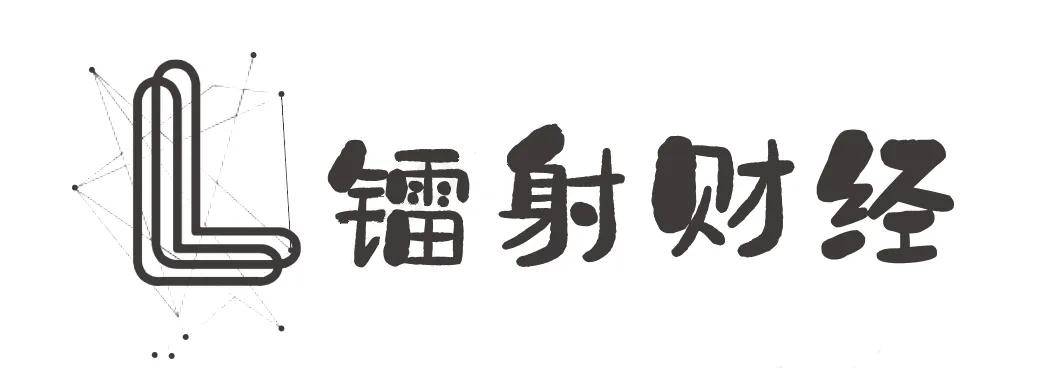我有一个显示上多了一行标签,我想证明它的文本(左对齐,右)。 什么是实现这一目标的最佳途径?
Answer 1:
这是由TAW提出的解决方案的实现。 这仅仅是实施基本代码 - 没有自动重新调整等。
public void Justify(System.Windows.Forms.Label label)
{
string text = label.Text;
string[] lines = text.Split(new[]{"\r\n"}, StringSplitOptions.None).Select(l => l.Trim()).ToArray();
List<string> result = new List<string>();
foreach (string line in lines)
{
result.Add(StretchToWidth(line, label));
}
label.Text = string.Join("\r\n", result);
}
private string StretchToWidth(string text, Label label)
{
if (text.Length < 2)
return text;
// A hair space is the smallest possible non-visible character we can insert
const char hairspace = '\u200A';
// If we measure just the width of the space we might get too much because of added paddings so we have to do it a bit differently
double basewidth = TextRenderer.MeasureText(text, label.Font).Width;
double doublewidth = TextRenderer.MeasureText(text + text, label.Font).Width;
double doublewidthplusspace = TextRenderer.MeasureText(text + hairspace + text, label.Font).Width;
double spacewidth = doublewidthplusspace - doublewidth;
//The space we have to fill up with spaces is whatever is left
double leftoverspace = label.Width - basewidth;
//Calculate the amount of spaces we need to insert
int approximateInserts = Math.Max(0, (int)Math.Floor(leftoverspace / spacewidth));
//Insert spaces
return InsertFillerChar(hairspace, text, approximateInserts);
}
private static string InsertFillerChar(char filler, string text, int inserts)
{
string result = "";
int inserted = 0;
for (int i = 0; i < text.Length; i++)
{
//Add one character of the original text
result += text[i];
//Only add spaces between characters, not at the end
if (i >= text.Length - 1) continue;
//Determine how many characters should have been inserted so far
int shouldbeinserted = (int)(inserts * (i+1) / (text.Length - 1.0));
int insertnow = shouldbeinserted - inserted;
for (int j = 0; j < insertnow; j++)
result += filler;
inserted += insertnow;
}
return result;
}
在行动:

Answer 2:
Unfortunately only the three most basic and simple types of alignment are supported: Right, Left and Center.
The fourth one, Justified or Block, is not supported in any .NET control afaik, not even in a RichtTextBox :-(
The only workaround would be to add either spaces or better a smaller whitespace character like thin space(U+2009) or hair space (U+200A) between the words i.e. after the regular spaces until the Label's Height changes. Then step one back and try to find the next insertion point, i.e. the next line and so on.. until the end of the text is reached.
A little tricky but not terribly hard.
Answer 3:
另一种实现。
这一次只插入词之间“头发空间”。
编辑:
补充说,实现段落对齐座的方法。
无论JustifyParagraph()和JustifyLine()调用的辅助方法Justify()
EDIT2:
方法调用改变。
label1.Text = JustifyParagraph(label1.Text, label1.Font, label1.ClientSize.Width);
public string JustifyParagraph(string text, Font font, int ControlWidth)
{
string result = string.Empty;
List<string> ParagraphsList = new List<string>();
ParagraphsList.AddRange(text.Split(new[] { "\r\n" }, StringSplitOptions.None).ToList());
foreach (string Paragraph in ParagraphsList) {
string line = string.Empty;
int ParagraphWidth = TextRenderer.MeasureText(Paragraph, font).Width;
if (ParagraphWidth > ControlWidth) {
//Get all paragraph words, add a normal space and calculate when their sum exceeds the constraints
string[] Words = Paragraph.Split(' ');
line = Words[0] + (char)32;
for (int x = 1; x < Words.Length; x++) {
string tmpLine = line + (Words[x] + (char)32);
if (TextRenderer.MeasureText(tmpLine, font).Width > ControlWidth)
{
//Max lenght reached. Justify the line and step back
result += Justify(line.TrimEnd(), font, ControlWidth) + "\r\n";
line = string.Empty;
--x;
} else {
//Some capacity still left
line += (Words[x] + (char)32);
}
}
//Adds the remainder if any
if (line.Length > 0)
result += line + "\r\n";
}
else {
result += Paragraph + "\r\n";
}
}
return result.TrimEnd(new[]{ '\r', '\n' });
}


JustifyLines()只与单行文本交易(在客户区短)
textBox1.Text = JustifyLines(textBox1.Text, textBox1.Font, textBox1.ClientSize.Width);
public string JustifyLines(string text, Font font, int ControlWidth)
{
string result = string.Empty;
List<string> Paragraphs = new List<string>();
Paragraphs.AddRange(text.Split(new[] { "\r\n" }, StringSplitOptions.None).ToList());
//Justify each paragraph and re-insert a linefeed
foreach (string Paragraph in Paragraphs) {
result += Justify(Paragraph, font, ControlWidth) + "\r\n";
}
return result.TrimEnd(new[] {'\r', '\n'});
}


工人方法
private string Justify(string text, Font font, int width)
{
char SpaceChar = (char)0x200A;
List<string> WordsList = text.Split((char)32).ToList();
if (WordsList.Capacity < 2)
return text;
int NumberOfWords = WordsList.Capacity - 1;
int WordsWidth = TextRenderer.MeasureText(text.Replace(" ", ""), font).Width;
int SpaceCharWidth = TextRenderer.MeasureText(WordsList[0] + SpaceChar, font).Width
- TextRenderer.MeasureText(WordsList[0], font).Width;
//Calculate the average spacing between each word minus the last one
int AverageSpace = ((width - WordsWidth) / NumberOfWords) / SpaceCharWidth;
float AdjustSpace = (width - (WordsWidth + (AverageSpace * NumberOfWords * SpaceCharWidth)));
//Add spaces to all words
return ((Func<string>)(() => {
string Spaces = "";
string AdjustedWords = "";
for (int h = 0; h < AverageSpace; h++)
Spaces += SpaceChar;
foreach (string Word in WordsList) {
AdjustedWords += Word + Spaces;
//Adjust the spacing if there's a reminder
if (AdjustSpace > 0) {
AdjustedWords += SpaceChar;
AdjustSpace -= SpaceCharWidth;
}
}
return AdjustedWords.TrimEnd();
}))();
}
关于RichTextBox的。
@TaW说,它不支持块对齐,但是这是不完全正确。
RichTextBox中是出了名基于在RichEdit类和支持类“正当性”。
该报道在旧平台SDK(举例)。
RichTextBox中有AdvancedTypographicsOption手柄创建期间明确地截断。
(这不是实现PARAFORMAT与PARAFORMAT2结构,这是不相关的,这是故意的)。
因此,这是一种“治疗”的RichTextBox差。 从它和覆盖派生的类OnHandleCreated重新启用“理由”。
工作在一个水平段或从点开始。
public class JustifiedRichTextBox : RichTextBox
{
[DllImport("user32", CharSet = CharSet.Auto)]
private static extern int SendMessage(IntPtr hWnd, int msg, int wParam, [In] [Out] ref PARAFORMAT2 pf);
[DllImport("user32", CharSet = CharSet.Auto)]
private static extern int SendMessage(IntPtr hWnd, int msg, int wParam, int lParam);
public enum TextAlignment
{
Left = 1,
Right,
Center,
Justify
}
private const int EM_SETEVENTMASK = 1073;
private const int EM_GETPARAFORMAT = 1085;
private const int EM_SETPARAFORMAT = 1095;
private const int EM_SETTYPOGRAPHYOPTIONS = 1226;
private const int TO_ADVANCEDTYPOGRAPHY = 0x1;
private const int WM_SETREDRAW = 11;
private const int PFM_ALIGNMENT = 8;
private const int SCF_SELECTION = 1;
[StructLayout(LayoutKind.Sequential)]
private struct PARAFORMAT2
{
//----------------------------------------
public int cbSize; // PARAFORMAT
public uint dwMask;
public short wNumbering;
public short wReserved;
public int dxStartIndent;
public int dxRightIndent;
public int dxOffset;
public short wAlignment;
public short cTabCount;
[MarshalAs(UnmanagedType.ByValArray, SizeConst = 32)]
public int[] rgxTabs;
//----------------------------------------
public int dySpaceBefore; // PARAFORMAT2
public int dySpaceAfter;
public int dyLineSpacing;
public short sStyle;
public byte bLineSpacingRule;
public byte bOutlineLevel;
public short wShadingWeight;
public short wShadingStyle;
public short wNumberingStart;
public short wNumberingStyle;
public short wNumberingTab;
public short wBorderSpace;
public short wBorderWidth;
public short wBorders;
}
private int updating = 0;
private int oldEventMask = 0;
public new TextAlignment SelectionAlignment
{//SelectionAlignment is not overridable
get
{
PARAFORMAT2 pf = new PARAFORMAT2();
pf.cbSize = Marshal.SizeOf(pf);
SendMessage(this.Handle, EM_GETPARAFORMAT, SCF_SELECTION, ref pf);
if ((pf.dwMask & PFM_ALIGNMENT) == 0) return TextAlignment.Left;
return (TextAlignment)pf.wAlignment;
}
set
{
PARAFORMAT2 pf = new PARAFORMAT2();
pf.cbSize = Marshal.SizeOf(pf);
pf.dwMask = PFM_ALIGNMENT;
pf.wAlignment = (short)value;
SendMessage(this.Handle, EM_SETPARAFORMAT, SCF_SELECTION, ref pf);
}
}
//Overrides OnHandleCreated to enable RTB advances options
protected override void OnHandleCreated(EventArgs e)
{
base.OnHandleCreated(e);
//EM_SETTYPOGRAPHYOPTIONS allows to enable RTB (RichEdit) Advanced Typography
SendMessage(this.Handle, EM_SETTYPOGRAPHYOPTIONS, TO_ADVANCEDTYPOGRAPHY, TO_ADVANCEDTYPOGRAPHY);
}
} //JustifiedRichTextBox







